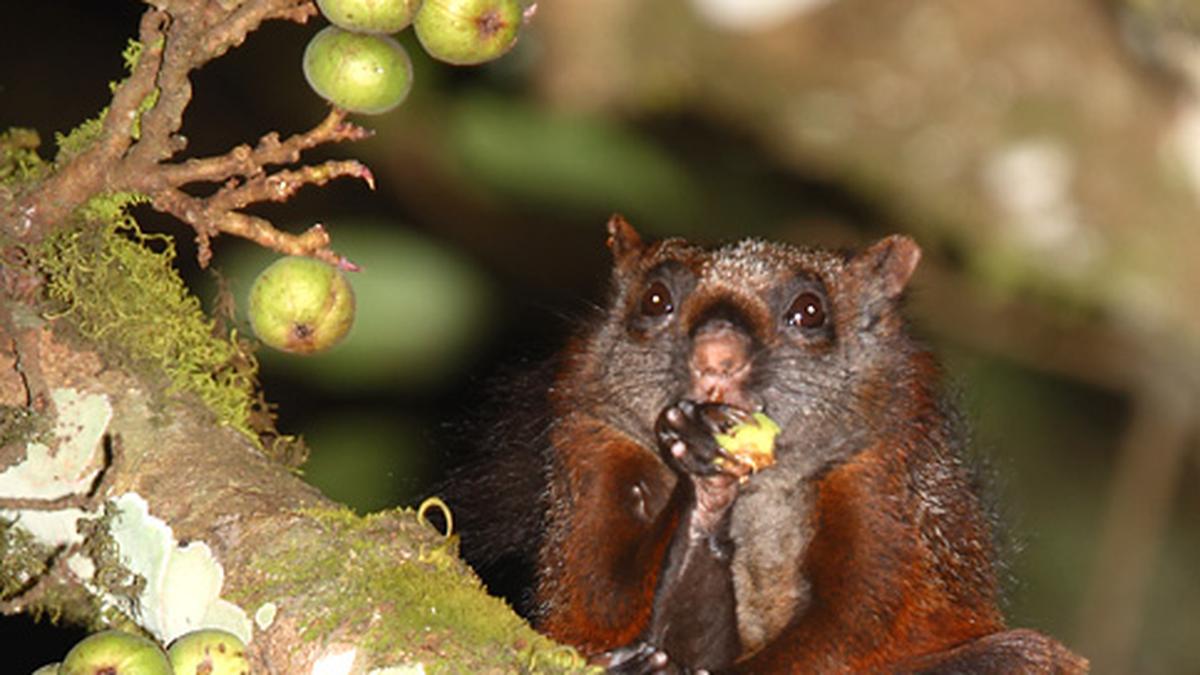
Indian giant flying squirrel. File
A rare record of an Indian giant flying squirrel (Petaurista philippensis) in the Upper Nilgiris, due to the individual meeting an unfortunate end after coming into contact with a barbed wire fence in Udhagamandalam, has prompted ecologists and wildlife biologists to call for specific action plans to be put in place to safeguard smaller, lesser-known species of wildlife from being affected by human infrastructure.
According to a short note published by authors Yeshwanth Kumar, K. Rishi, Saran Moorthi, M. Shahir, A. Abinesh, N. Moinudheen, and A. Samson in ‘Mammology Notes’, the carcass of the giant flying squirrel was found in April 2023, entangled in barbed wire fencing along the roadside near a private property.
The researchers note that this is one of the first documented records of the species in the higher altitudes of the Nilgiris, with the species said to ideally prefer habitats between 500 and 2,000 metres above Mean Sea Level (MSL). One of the authors of the paper, A. Abinesh, said that the species preferred dry deciduous and evergreen forests, and were found in abundance along the Coonoor and Kotagiri ghats, as well as in Gudalur in the Nilgiris.
“Its occurrence in Ooty itself is very unusual, and it’s not very often seen in Shola forests. This particular individual was seen near a patch of exotic species, which makes this particular record even more peculiar,” said Mr. Abinesh, who is a wildlife biologist.
‘Need for comprehensive study’
Another researcher, K. Rishi, said that a comprehensive study to identify whether there was a resident population in the areas surrounding Udhagamandalam needs to be undertaken. “This species usually spends its time in the forest canopy, and usually avoids venturing close to the ground,” he said, adding that surveys should be undertaken if the individuals recorded in Udhagamandalam was part of a resident breeding population or stray individuals.
Forest department officials stated that in 2023, there had been multiple reported incidents of Indian giant flying squirrels between a five-month period between April and August, primarily due to electrocution when the animals would accidentally glide into power lines.
“There could be multiple reasons as to why the squirrels could have ventured so close to the ground, leading to their deaths,” said Mr. Abinesh, who said that a lack of food in the forests and prevalence of invasive species, coupled with a lack of canopy cover around the town, could have led to the reported deaths of the individuals.
N. Moinudheen, an independent wildlife researcher, said that such incidents highlighted the need for policies to be formulated as to what kind of protective barriers can be allowed in areas near reserve forests. “It has been established that glass covered walls, power lines and barbed wire fences can affect a number of species, including squirrels, bats, birds, and even snakes. The government should look into what kind of steps can be taken to mitigate the impact of such infrastructure on native wildlife,” he said.
Published – June 24, 2025 04:57 pm IST























